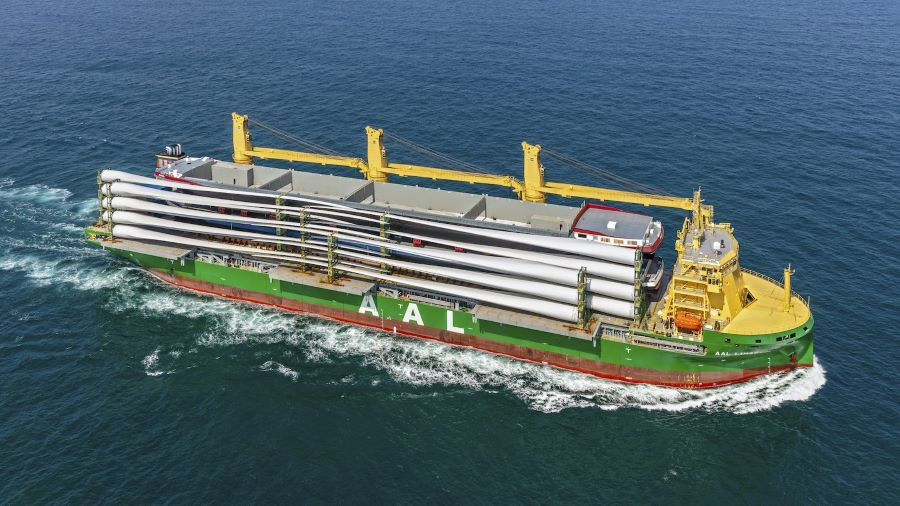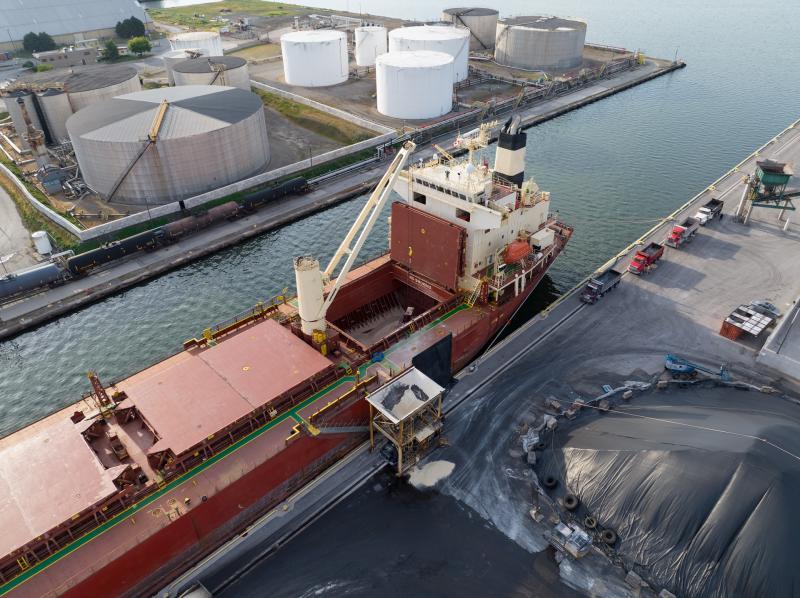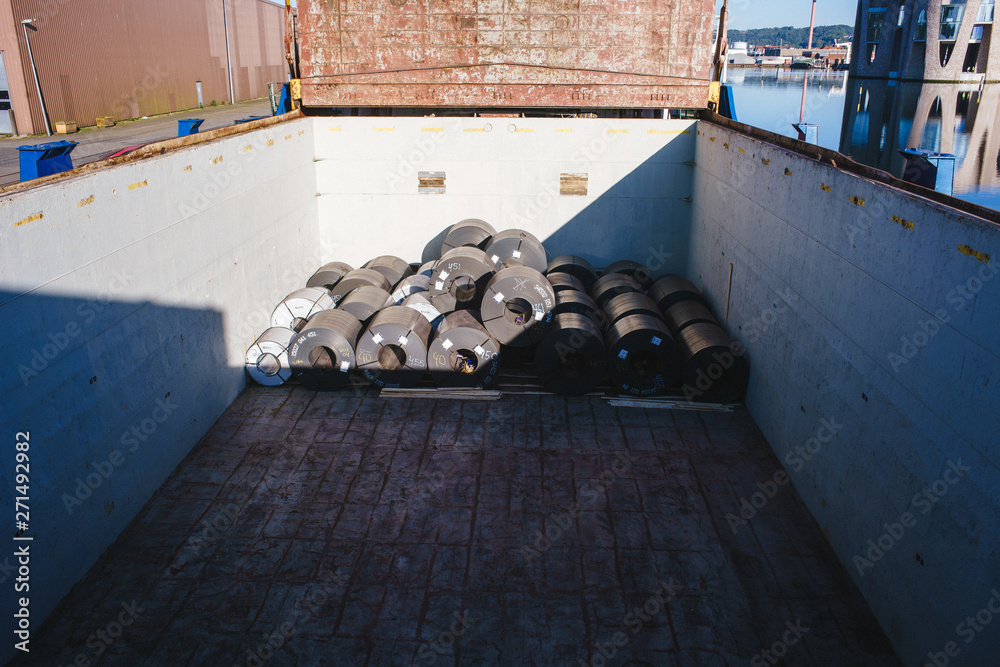The Mighty Movers: Understanding Ship Cargo Capacity
Ever wondered how those giant ships transport all that stuff across the oceans? It's like a massive, floating city transporting goods, (Imagine the amazing size!). This article dives deep into the fascinating world of ship cargo capacity, exploring different types of vessels, the factors impacting capacity, and even touching upon some quirky, real-life situations I've encountered.
What is Ship Cargo Capacity Anyway?

Source: wp.com
Ship cargo capacity, basically, refers to how much a vessel can carry. (It's like a room in a giant home, but it's on the ocean, right?). Different kinds of ships have different sizes and special designs that affect their cargo-carrying ability. This ability affects trade. It all boils down to weight, volume, and the type of goods you want to transport.
Types of Ships & Cargo Carrying Abilities:

Source: batteriesnews.com
- Container Ships: Dominate the scene. Huge and super efficient for standardized cargo, (Think huge containers full of your clothes).
- Bulk Carriers: Move large volumes of commodities, (like coal or grain), efficient for large shipments, like big trucks taking huge sacks from farms.
- Tankers: Carrying oils, chemicals, and other liquid goods (Crucial for our life necessities like cooking oils and diesel), large vessels are crucial to transport it.
- Ro-Ro (Roll-on/Roll-off): Cars, trucks, and other wheeled vehicles ride the ship (Very interesting transport type, see it personally).
- Passenger Ships (with Cargo): Smaller amounts of goods travel on the huge liners. (This may surprise many.)

Source: ship2shore.it
Factors Influencing Capacity:
- Size of the Ship: Big ships can usually hold much more. (It's like a big truck versus a small car.)
- Type of Cargo: Different cargo has varied space and weight requirements, affecting the overall limit on cargo to be transported. (Heavy objects mean fewer items, while light things may accommodate much more quantity. ).
- Load Stability: The distribution of weight is crucial, preventing the vessel from capsizing. (You need an engineer in this aspect.)
- The Condition of the Ocean (Environmental issues): Weather conditions influence shipping times, routes and may impact ship's carrying abilities. (Storms affect many shipping voyages).
- Safety and Regulation Standards: Regulations worldwide impact carrying limitations and vessel design standards, all affect efficiency. (We have a common goal: to do the job right.)

Source: holdsolutions.com
Capacity and Commercial Considerations:
What affects ship capacity usage? Let's take a closer look at commercial factors, that affect profitability for each company involved.
Here's a simple example, based on reviews from people I talked to.
Example:
A shipping company wants to transport cars from a factory to the UK (Imagine an auto maker!). They need a ship to carry them! They would:
- Analyze the total weight of the vehicles
- Plan the routes for transportation. (Find a most suitable voyage!)
- Calculate if this shipment's profit is enough. (Make some revenue and calculate the maximum amount that this trip can profit!)
- Check loading capabilities from docks to ships and find suitable loading arrangements. (That part may get a little difficult).
Calculating the Best Ship
I talked with an expert! One of my friends is an assistant shipping manager! She emphasized how the cost and efficiency in use should match what a company gains. (It's always about profit.) Here is some valuable info based on what she's saying:
A crucial aspect: Finding the right ship means comparing and looking at shipping capacity from several viewpoints:
- Maximum carrying potential: Is the size and loading features great for their needs.
- How much a ship costs: (Think budget.)
- Trip costs and how long it takes: (Estimate journey to ship!).
Here are a few reviews I've got. I can summarize what I found interesting:
"Reviews":
A lot of customers reported being surprised and happy by efficient loading. Some felt a small delay, in contrast to their experience when ordering containers. Another interesting review I read said, “Ships are the safest method of large goods and product shipment that exists”.
A table demonstrating types of ships, carrying limitations and reviews (limited sample):
<table>

Source: ftcdn.net
Real-Life Scenarios and Observations
One time, I witnessed a large shipment of raw materials, heading overseas. The team managed to correctly arrange loads to suit the ship size to the optimal potential, something remarkable! The captain gave good remarks (a great thing to have as a reviewer of shipment and arrangements) (Important skill!), but it looked complicated and a bit frustrating!
Another fascinating encounter involved a small cruise liner with a smaller capacity. Still, they loaded sufficient cargo in the bottom level for profitable journeys and the journey to be quite enjoyable for guests. (Cruises are profitable ventures when ships operate safely).
Conclusion: A Look Ahead to Cargo Capacity
Understanding ship cargo capacity is essential for efficient trade and commerce globally. Companies require various ships to perform their shipment, each with strengths that align with the shipping company's focus, product and customers' requirements.
There's a ton to learn about optimizing capacity to get more and minimize wastage. Different vessels are crucial for their efficiency in carrying distinct types of goods from ports to destinations. (Just like one type of truck cannot transport various goods efficiently; it all relies on design.). It's really important to optimize the ship's capacity to transport massive quantities. (It involves so many crucial steps!)
From bulk carriers to container ships to tankers and roll-on/roll-off vessels, there’s something suited to every shipment’s needs.
Also, consider environmental impact while selecting a type and a suitable carrier and transportation plan.
So, the next time you see a massive ship slicing across the ocean, remember the complex interplay of size, type of cargo, regulations and much more. That great vessel, just like the ships, is one amazing work of art.




